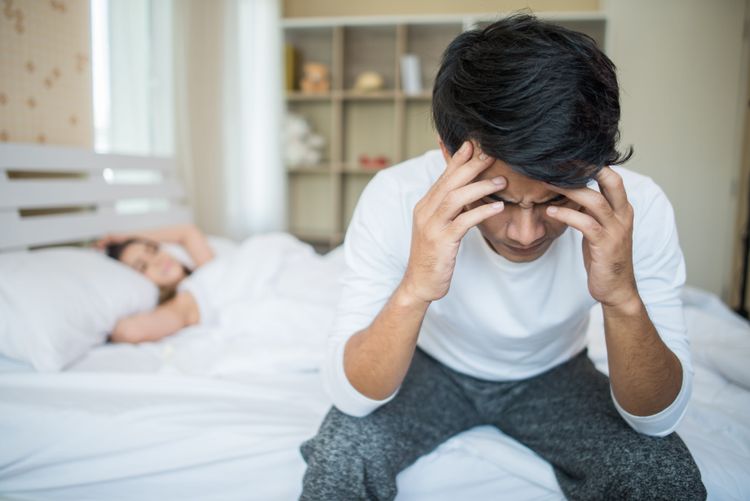Few diseases disrupt so much daily life as an overactive bladder. The sudden need to find a restroom, the midmeeting interruptions, the restless nights all can leave you exhausted and furious. Fortunately, minor adjustments to daily habits can bring genuine relief. On the basis of recommendations by experts in the urology field, following are five lifestyle changes that may make your life easier with overactive bladder and how to identify the triggers that annoy you the most.
Learning About Overactive Bladder
Overactive bladder is caused by muscles that control urinating contracting when they shouldn’t, creating an urge to void suddenly even if the bladder isn’t full. In addition to the numerous daytime trips to the bathroom, most people wake up multiple times a night to drain the bladder. Medication and therapies come into play, but lifestyle modification is the foundation of treatment, reducing symptoms and improving the quality of life.
Mind Your Fluid Schedule
What and how much you imbibe makes a large difference. Consume much fluid in excess all at once, and your bladder labors too hard. Instead, make arrangements for balanced hydration through the day with sipping on water rather than gulping. Do not take much two hours before sleeping to reduce nocturnal visits. Caffeinated beverages are diuretics as well as bladder irritants, so substitute coffee and some teas with herbal alternatives. Carbonated drinks and alcohol can also lead to urgency, so attempt to cut down on them or test with small amounts to see if they can affect you.
Change Your Diet to Calm Your Bladder
Certain foods will inflame the bladder lining or make more urine. Hot foods, citrus fruits, tomatoes and artificial sweeteners are often at the top of the culprits’ list. Maintain a two-week food and symptom diary, writing down everything that you eat and variations of urgency or frequency. You may continue to find chocolate or hot peppers forcing you to the bathroom, and oats and lean protein providing a comfort span that lasts longer. When you identify your personal triggers, replace them with bladder-friendly staples such as bananas, rice and non-citrus vegetables.
Practice Bladder Training Techniques
Bladder training helps extend the time between the urges, reeducating messages between your bladder and brain. Start with three or four hours between trips to the bathroom instead of responding immediately to every urge. Use distraction skills, walking, slow deep breathing or just plain old mind games, to hold out for five or ten minutes. Gradually increase the waiting time in increments over a few weeks and work toward six-hour periods during the day. This builds up pelvis muscle control and reduces the constant “need to go” feeling. Stick with it; utilize alarms if needed and praise tiny successes to keep motivated.
Strengthen Pelvic Floor Muscles
Pelvic floor exercises or Kegels keep the muscles that support the bladder and the urethra strong, which erases leaks and relief from urgency. To locate the right muscles, stop the flow of urine in midstream, the same contractions are contracting your pelvic floor. While sitting, standing or lying down, contract those muscles for five seconds, then relax for five seconds. Work up to ten repetitions three times daily. Over time you’ll notice tighter control, fewer accidents and a greater ability to hold urine until it’s convenient to go.
Maintain a Healthy Weight and Stay Active
Excess weight puts pressure on the bladder and pelvic floor, worsening urgency and incontinence. Diet balanced with regular exercise can ease that strain. Aim at 150 minutes of moderate exercise each week, say brisk walking, swimming or cycling. Strength exercises keep core muscles strong and support weight management. If high-impact activities trigger symptoms, switch to softer ones such as yoga or Pilates, which also stabilize the pelvis. As you lose even a small amount of weight, you should experience bladder control greatly improving.
Finding Your Personal Triggers
Everyone’s bladder is slightly different. In order to find your own personal triggers, keep a simple bladder diary for at least seven days. Note fluid intake times, times of food eating and all trips to the bathroom, recording urgency and leakages. After a week, review patterns: does coffee at 9 AM lead to two extra trips before lunch? Does a soda at dinner lead to multiple nightly wakings? Use these insights to tailor your diet and fluid schedule. Over time you’ll learn which habits to reinforce and which to adjust.
Putting It All Together
Start with selecting a single or two methods that feel most plausible. Perhaps you begin by relocating your biggest daily fluids to the morning and replacing cola with herbal tea. Once that is automatic, add bladder training exercises or a short pelvic floor exercise. Incremental, routine adjustments accumulate upon one another over weeks, addressing symptoms without radical life changes. Remember, perfection is not the goal, progress is.
When to Seek Professional Help
If these self-care strategies do not ease symptoms after six to eight weeks, or if you experience pain, hematuria or unexplained alterations in bladder function, visit a urologist. You may require prescription medication, physical therapy or specialty procedures such as neuromodulation. Your physician can also rule out infections, stones or other disorders that bring about symptoms such as overactive bladder.
Having an overactive bladder is about acclimating to the messages of a body rather than letting them control your life. By being aware of your fluid pattern, adjusting your diet, training your bladder, exercising your pelvic muscles and maintaining a healthy weight, you become more resistant instantly. Combined with a positive symptom diary, these are practices that allow you to be confident, reduce bathroom anxiety and sleep undisturbed. With persistence and patience, overactive bladder is second nature, and you can enjoy those precious moments that matter most.
Visit our Life page for more tips on well-being, self-care and professional advice on tackling everyday conditions.



